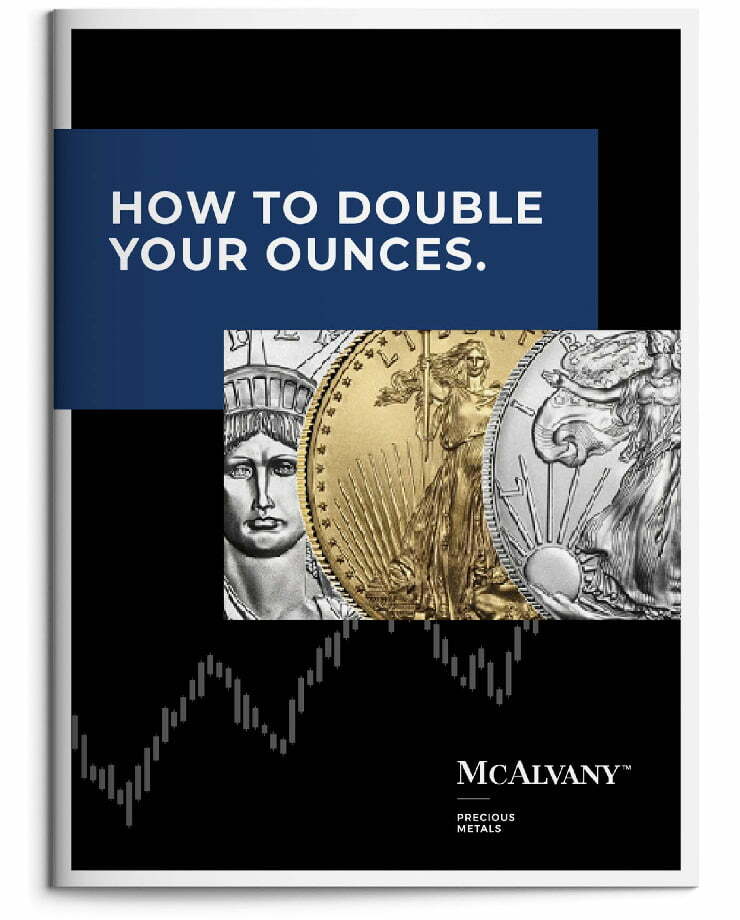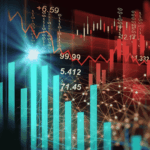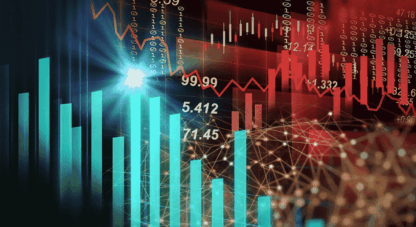While it’s clear (to some, at least) that President Trump intends to address America’s economic woes predominantly through high economic growth, the fact that he intends to seriously exacerbate the country’s astronomical debt problem to do so is worrisome. Even many of his strongest supporters are simply crossing their fingers and hoping. His conditional supporters, such as Elon Musk and Rand Paul, consider the debt expansion in Trump’s Big Beautiful Bill to be more significant than any growth that might be produced. This tends to be the suspicion of the McAlvany analysts, as well.
Whether America succeeds through growth or succumbs to debt is an open question that might not be answered for some time. So what money do you take when you don’t know whether the train you’re about to board is going north or south? Well, gold works in either Canada or Mexico (or North Dakota or Texas). As in this allegorical quandary, gold also works whether Trump revitalizes America’s economy through lowering the value of the dollar or the debt becomes so big it can be dealt with only through high—or even hyper—inflation. That fact should get investors’ attention. So far, it hasn’t—though that’s finally changing.
Key Takeaways:
- Weaponizing assets and logistics
- The big boys are worried
- Debt matters—a lot
- Gold is a strong building on a strong foundation
The McAlvany Weekly Commentary: The Big Beautiful Bill’s Hidden Bomb
This week David and Kevin discuss Section 899 of the Big Beautiful Bill. It allows the US Treasury to impose penalties and taxes on foreign-held US assets. It’s a way to weaponize financial instruments, which could lead to a capital war and put additional pressure on the US dollar and bond market. The hosts also note that there is a political divide on inflation. Looking ahead, Democrats expect an annual inflation rate of 9.4%, while Republicans expect it to be 1%. The Commentary highlights the expansion of the Treasury bond market from $5 trillion to $29 trillion since 2008, raising concerns about fiscal sustainability. It also mentions warnings from Jamie Dimon, the CEO of JPMorgan Chase, about an impending financial crisis. The hosts then turn to global security risks. The attack by Ukraine on Russian bombers using drones concealed in shipping containers demonstrates the capability of weaponizing the global logistics system and highlights the increased risks and unpredictability this poses for security. These points collectively underscore the complex and interconnected nature of financial and security issues in the current geopolitical landscape.
Credit Bubble Bulletin: Uncertainty Squared
Thanks in large part to President Trump, the global market is characterized by significant uncertainty, influenced by policy shifts, trade wars, and economic factors. Stock markets exhibit volatile resilience, with frequent rallies and drops, indicative of a speculative ‘risk on/risk off’ environment. The MAG-7 Index, a key indicator of speculative finance, shows dramatic fluctuations. Central banks, especially in the U.S., are grappling with reduced bond market demand and rising yields, signaling potential liquidity issues. Major financial institutions like Goldman Sachs and BlackRock are adjusting their risk positions in response to market volatility and concerns over the U.S. national debt. Financial leaders, including Jamie Dimon and Ken Griffin, have issued warnings about the fiscal risks associated with the growing national debt, which could result in wider credit spreads and diminished investor confidence. The trade war between the U.S. and China, despite minor concessions, continues to fuel market instability.
Hard Asset Insights: Only the Beginning
For America, debt is the 800-pound gorilla. Financial leaders including Jamie Dimon and Elon Musk have warned that the U.S. national debt, now nearly $37 trillion, is unsustainable and poses a significant risk. Dimon described it as a “ticking time bomb,” questioning the country’s ability to address the issue in time. Musk criticized recent spending bills, stating they will worsen the budget deficit and burden citizens. These concerns are reflected in the bond market, where yields are stable or rising despite a slowing economy, indicating a loss of trust in government commitments. This shift, along with a rise in gold prices, suggests a growing preference for gold as a reserve asset. Investors are well advised to consider reallocating a portion of their portfolios to gold and related assets due to the potential for further economic instability.
Golden Rule Radio: Debt Rising, Faith Falling
Gold and silver prices have surged, with gold increasing by over 3% and silver by nearly 4% from the previous week. The S&P and DOW are showing signs of peaking after their gains in May. Global demand for gold is robust, driven by rising debt, increased government spending, and geopolitical tensions, reinforcing its status as a safe haven. Tory points out that the current market for gold has been decades in the making, and has strength and momentum commensurate with this immense foundation. Like Morgan, he points out the immense importance of the current debt picture, which will be exacerbated by the Big Beautiful Bill. Such huge payment obligations are typically highly inflationary, and when currencies fail, gold holds up.















